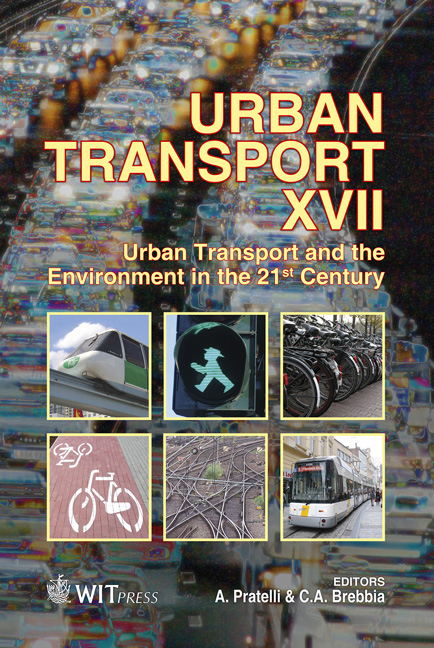Development Of A Red-light Running Violation Index Model For Signalized Intersections
Price
Free (open access)
Transaction
Volume
116
Pages
12
Page Range
379 - 390
Published
2011
Size
3,278 kb
Paper DOI
10.2495/UT110321
Copyright
WIT Press
Author(s)
S. A. Arhin, E. C. Noel, L. Williams & M. Lakew
Abstract
The installation of Red-Light Cameras (RLCs) is often based on frequencies of Red Light Violations at signalized intersections. Since frequencies could be influenced by geometrical features of intersecting roadways and overall vehicular volumes (or exposure) there is doubt about their appropriateness in making decisions regarding the installation of RLCs. Inappropriate installation could result in unintended consequences such as increasing the frequency of some types of crashes. In order to eliminate the potential for bias with the use of frequencies as a means of deciding which intersections may need RLCs, a Red- Light Violation Index (RLVI) is introduced for dense urban environments. There is no red-light violation or red light crash threshold in the District of Columbia above which red light cameras should be considered for installation. In this research, a model for background or base RLVI was established which could assist engineers in determining the expected potential for red light running at intersections based on engineering properties, without the use of red-light running frequencies or crash records. A RLVI probabilistic regression model was developed based on five intersection independent variables: vehicles per hour green, lane configuration, clearance distance, duration of green and posted speed limit. The results showed a statistically significant regression model with an R2 of 81%, at a 5% level of significance. Keywords: red-light running, intersection safety. 1 Introduction Between 1999 and 2010, the Metropolitan Police Department installed approximately 50 Red-Light Cameras (RLCs) in the District of Columbia (DC).
Keywords
red-light running, intersection safety





